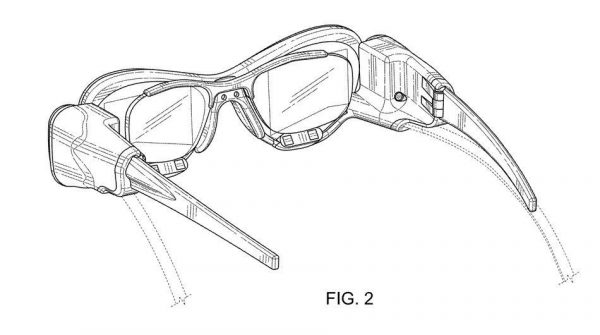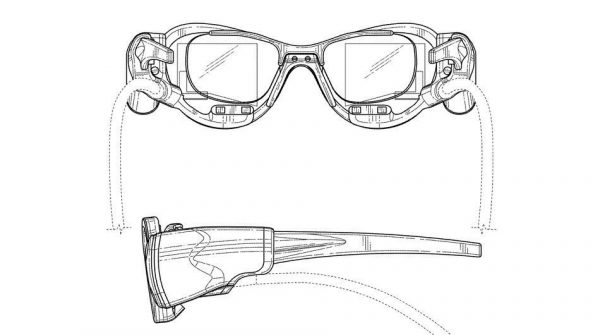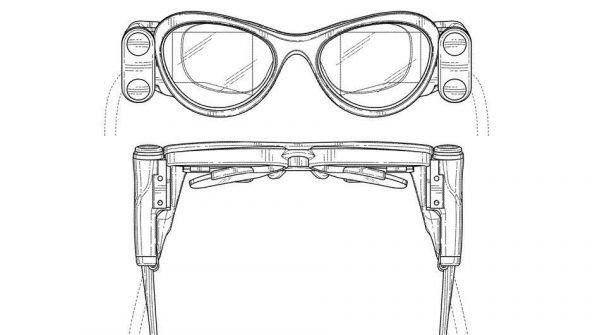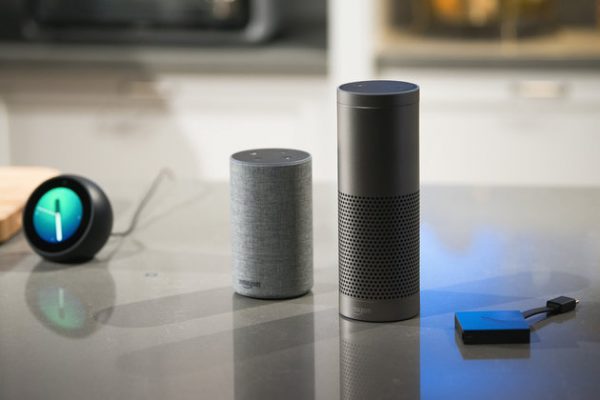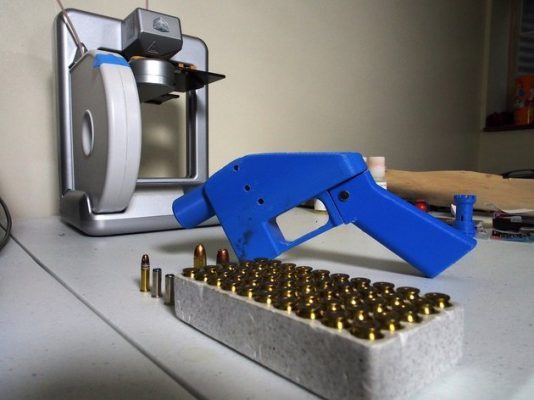Magic Leap patent drawings offer peek at secretive AR startup’s glasses design
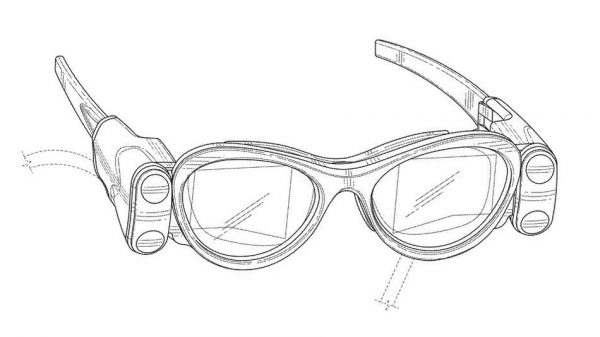
The latest twist in the hype-laden mystery around Magic Leap now includes a new set of patent drawings that offer a brand new look at what may be the company’s augmented reality glasses.
In a patent issued August 29, 2017 (but originally filed in 2015), we see a series of eight drawings that detail a pair of bulky glasses that appear to be equipped with sensor arrays on both sides.
One of the drawings shows what looks like a second pair of lenses fitted behind the main lenses, folding inward in a concave direction.
Interestingly, in the main description on the patent, the glasses are referred to as “virtual reality glasses” rather than augmented reality glasses. However, since the terms have been used loosely and interchangeably by some companies, this may not describe the final functionality of the device, particularly since most of the demonstration videos from Magic Leap have focused on what appears to be kind of augmented reality.
The drawings were surfaced by Business Insider in a report that managed to get a Magic Leap spokesperson on the record as saying that “what you are looking at is not our product.”
That could mean anything from the drawings are close, but the final version will be slightly different, to this really looks nothing like the final version. Nevertheless, the report goes on to cite sources “with knowledge of Magic Leap’s hardware” as saying the patent drawings are close to the product “in appearance.”
Great. We can’t wait to see them.
But here’s the thing: Magic Leap has mostly blown its shot at capitalizing on its early hype. Initially driven by massive funding that included the likes of Google and later Alibaba, eventually giving the company a valuation of around $4.5 billion, the expectations around Magic Leap have been huge. Add to that the glitzy video demos and comments from insiders who have tried it, and it seemed that Magic Leap was on the cusp on changing the very entertainment industry itself.
But a series of events, including high profile executive departures, legal issues, and a damning report late last year that gave less than impressive marks to Magic Leap’s capabilities have tamped down expectations, and raised the bar in terms of what the company needs to show us to justify the multi-year hype surrounding it.
Meanwhile, the AR and VR industry, from hardware to software companies, is improving every quarter, further raising the bar for what might have been mind blowing tech from Magic Leap just a few years ago.
A few patent drawings don’t tell the whole story, and Magic Leap may yet deliver something we’ve never seen before. But as each month passes, Magic Leap is beginning to look more and more like just another (albeit possibly cutting-edge) product that will have to first prove its value in the increasingly crowded AR/VR marketplace before winning over Hollywood or the general public.



